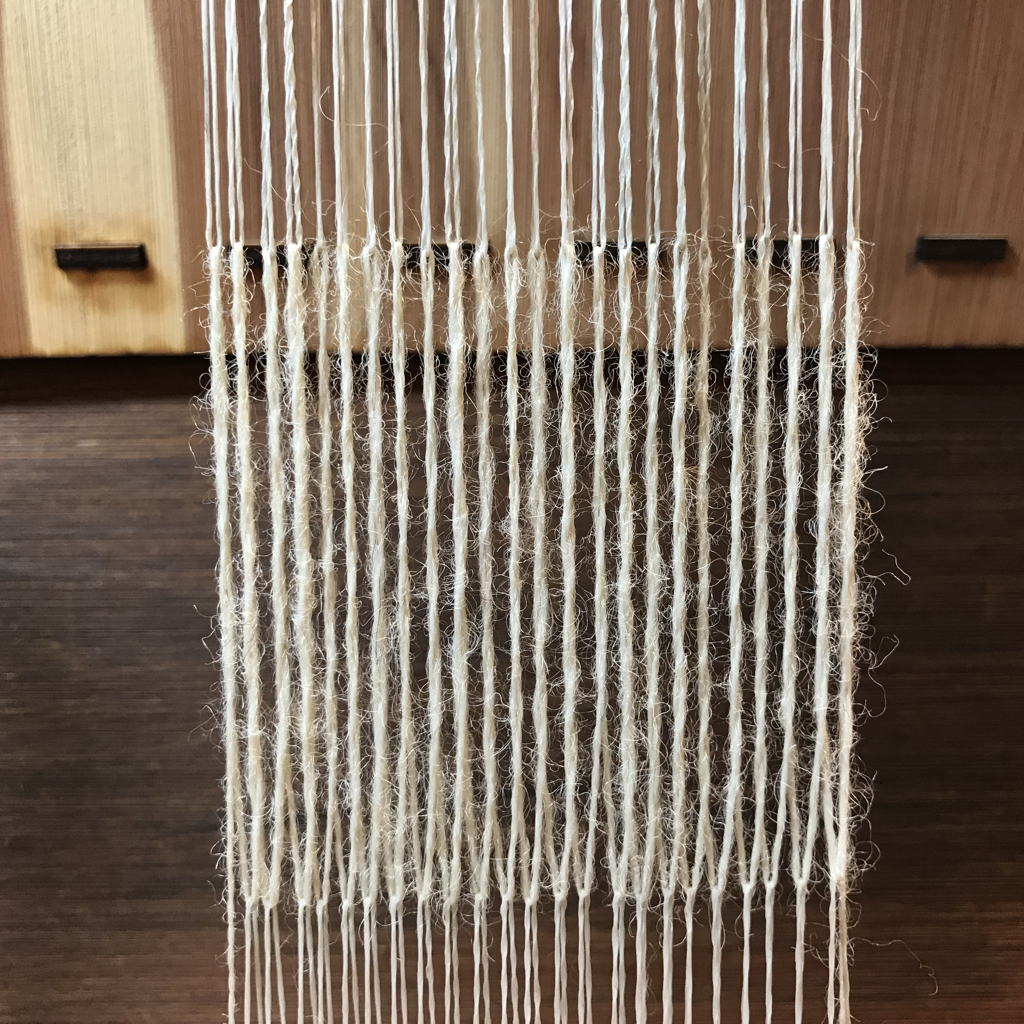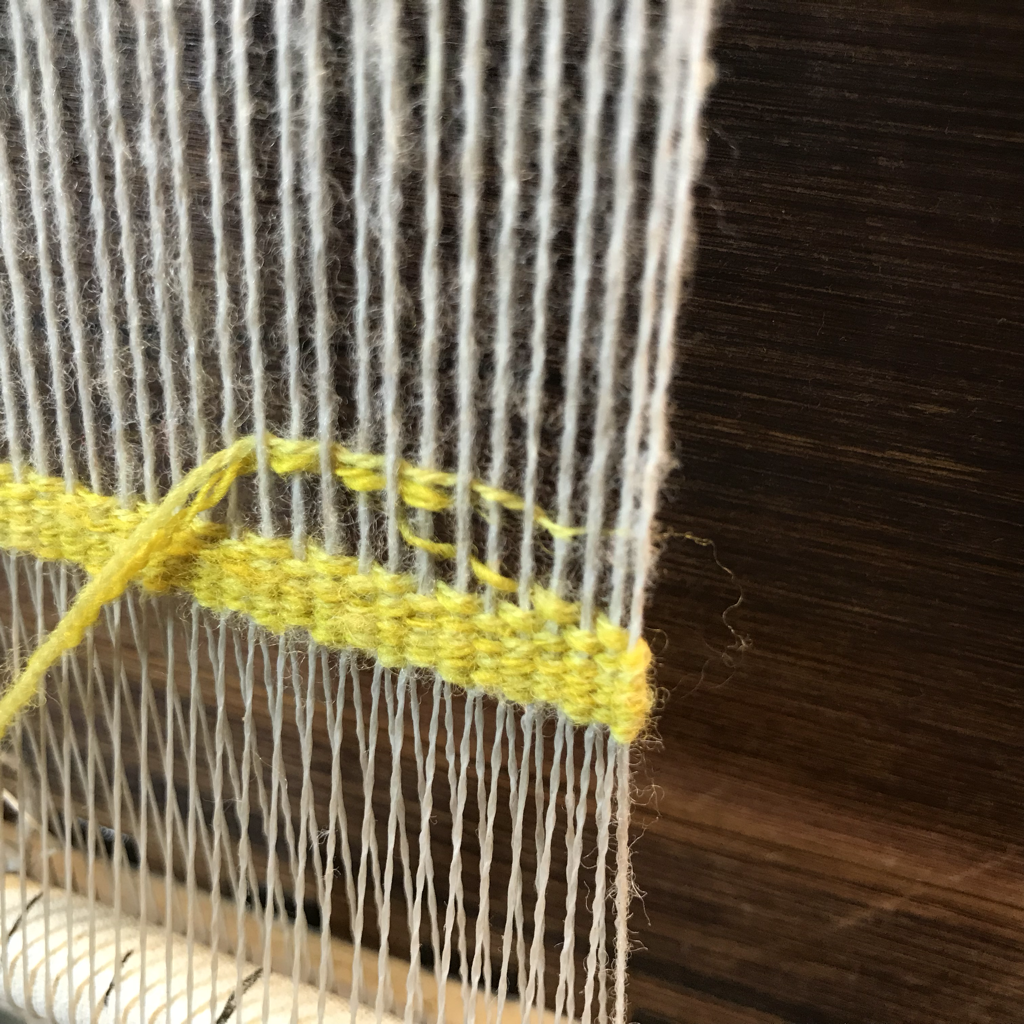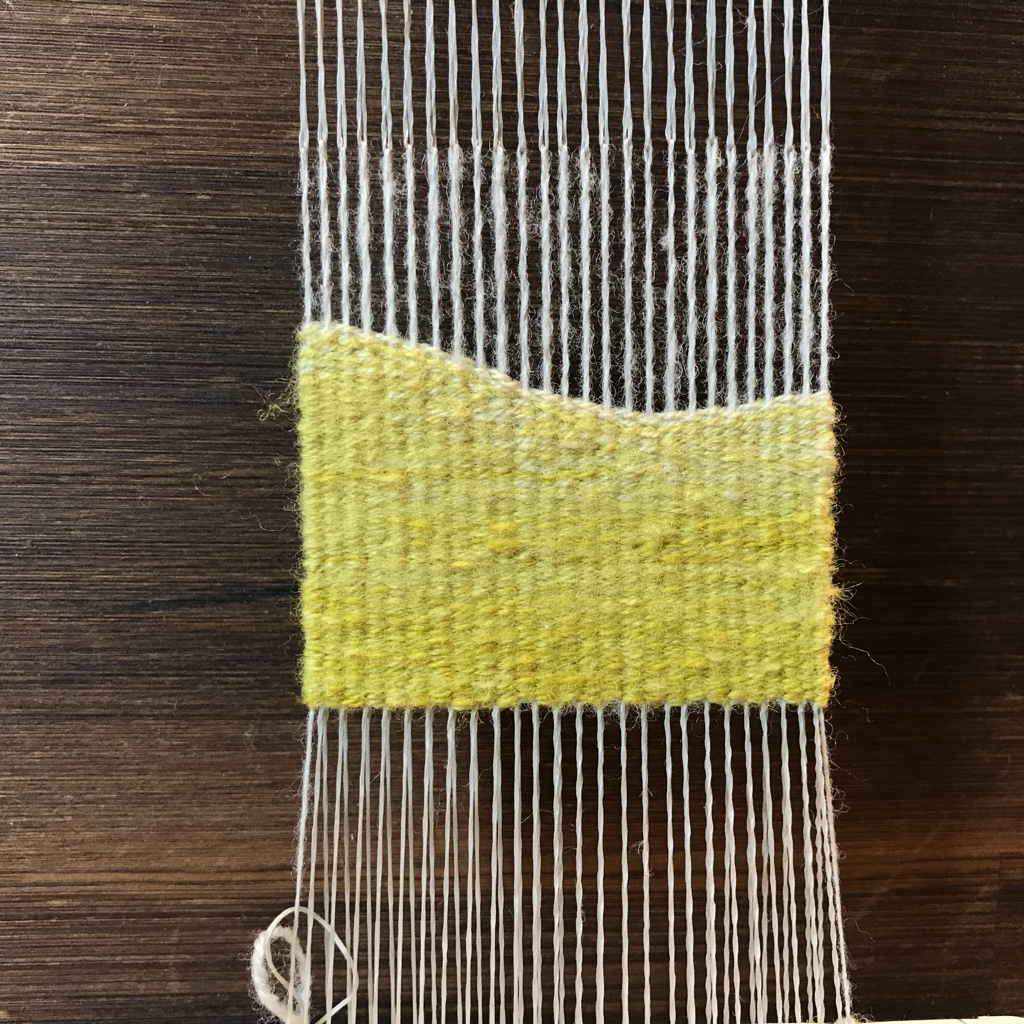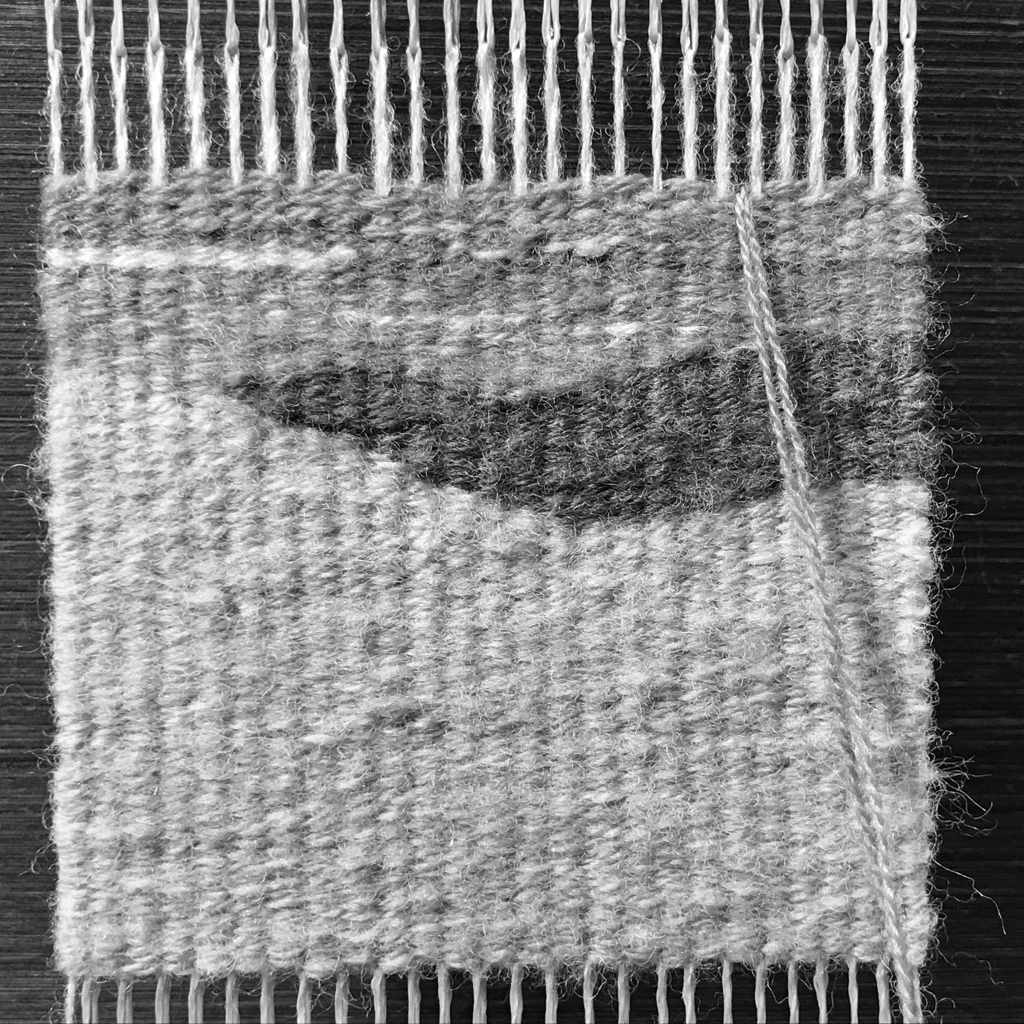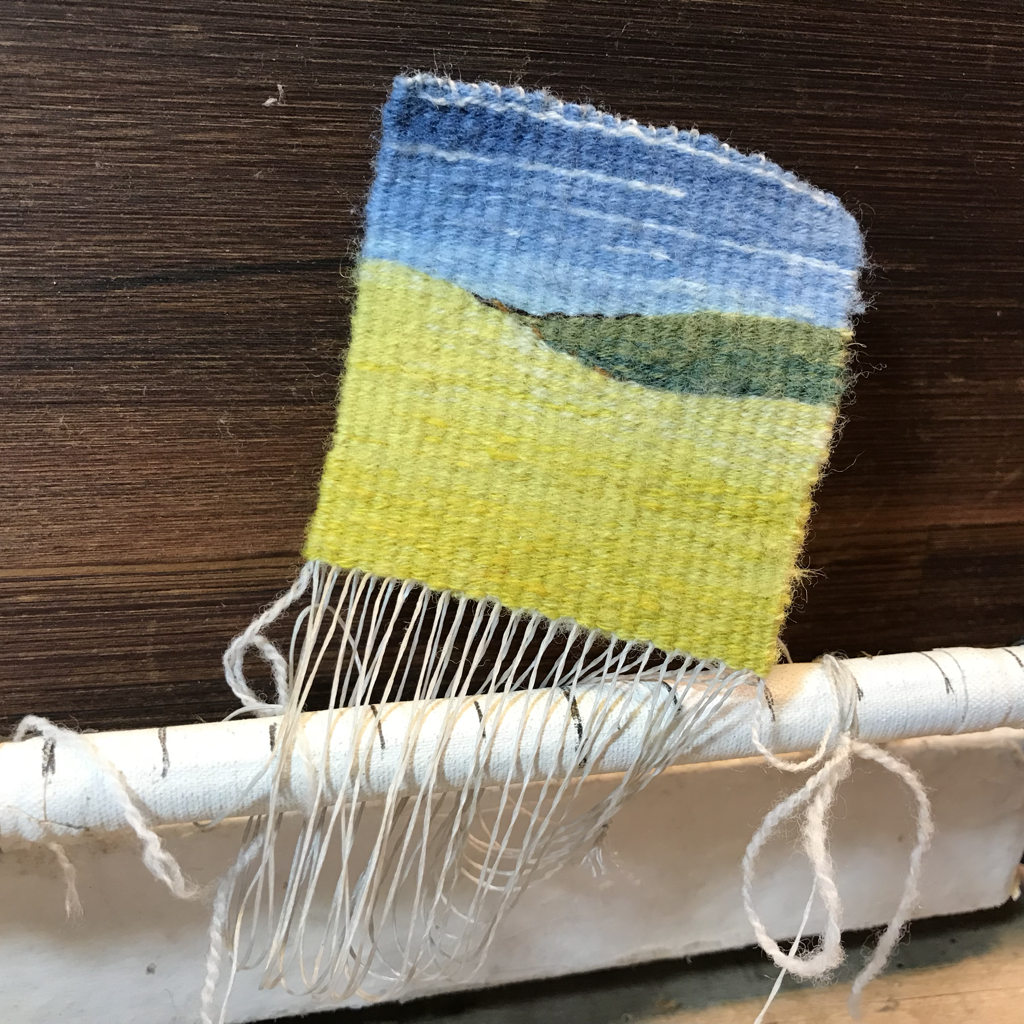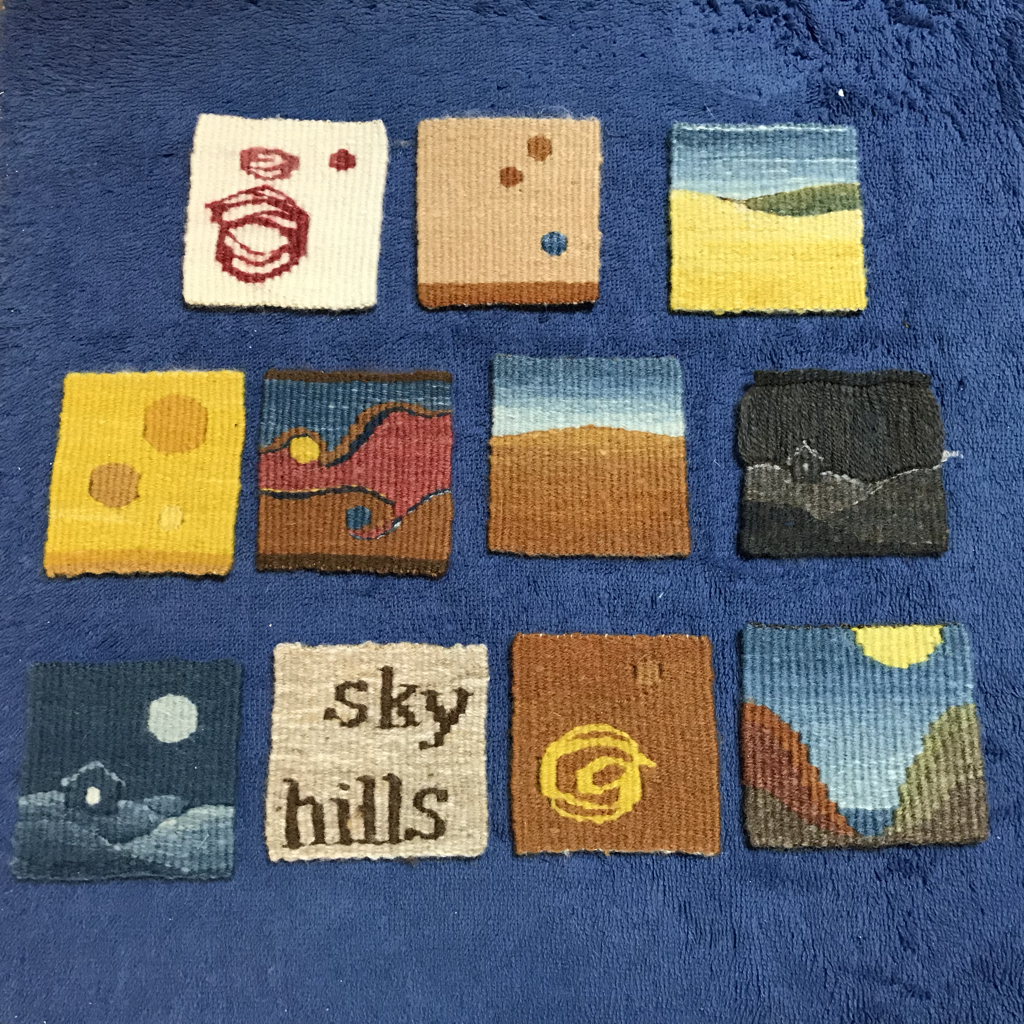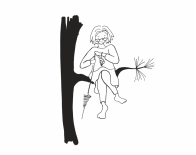one about about the clean edges of the tapestry doodles
and another about how I weave in the ends as I go.
Rosemary kindly pointed Janet to my four selvedge warping instructions, which helps explain the clean edge thing, but I thought I'd attempt to show how both questions can, in part, be answered at once.
The warp with which I weave, then, is actually two strands twisted around each other and used as one except at the bottom where the loops are offset by one strand.
There is nowhere for the weft to go.
This also means that if I lay the end of the weft (in this case two strands of yellow), into the shed with the ends of the wisps at the selvedge, it stays right where I put it.
Nothing sticks out save the odd tiny wool fiber.
This is how I change color too.
If a shape is finished before I've reached the end of the yarn for that shape, I break the weft at the appropriate place and weave the wisps in. Nothing goes to the back.
1. The wisps exist because I always break or untwist rather than cut the weft
With singles weft, I hold the yarn with my hands a staple length apart, untwist each strand, tug lightly, and the strands separate leaving the wispy ends ready to weave.
Plied weft, alas, untwists into its component strands of singles so it is easier to simply break it. The wisps are rarely as long or nicely tapered as with untwisted singles, but it still works.
If your yarn resists easy breaking, you can 'shave it' with a pair of scissors.
The point is to avoid the blunt end that happens with a straight scissors cut.
I once wrote a blog post called In Praise of Wool Warp, where I think I may have talked more about this, but the idea is that the tiny strands of warp and weft tangle with one another and hold all those wispy bits in place.
Wool weft on cotton warp should be OK too, as long as all of your weft ends are treated as described above so they can cling to each other and not pop out.
Since all of my weft is perfectly and consistently 'imperfect', an extra half pass, or a slight bump where one overlapping strand meets another, will vanish into the general look of the tapestry.
On the rare occasions that I've used mill spun weft, I still weave in the ends, but use extra care with the overlapping of the wisps.
An extra pass in the wrong place can wreck a graceful curve no matter your weft material, giving your smooth hills unlooked for rocky outcroppings,
or imposing the dreaded nipple effect on an otherwise sensuous body part....
For now, you can find out a little more by checking out my post on weaving letters, where I show how I use a needle to move weft around inside the tapestry itself, and also how I finish small shapes without leaving any tails on the back.
Rebecca Mezoff uses a needle to weave in all of the weft ends of her tapestries, she just does it when the tapestry is off the loom rather than as she weaves, and I know this works better for many people. Her classes tell you just how to do it.
For me, it's best to do it I'm still in the thick of the action as, if I waited till the pieces were off the loom, I'd probably never get a Round Tuit.
It started yesterday with Molly Elkind's great blog post on using collage for tapestry design.
At the bottom of the post are links to the blogs for the rest of the week.
There are even Prizes!!!!
It was great fun doing this two years ago, and I'm delighted it is now a thing.
So check it out! Who knows what we'll all learn?

